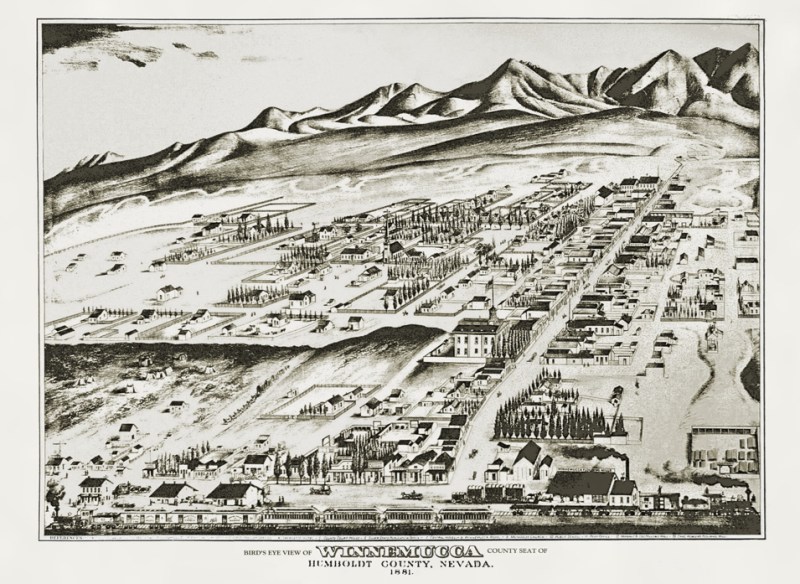Nestled in the heart of Carson City, Nevada, the Bliss Mansion stands as a testament to the state’s rich history and the enduring legacy of its early pioneers. This elegant mansion, with its Italianate architectural style and storied past, has played a pivotal role in the development of Nevada and remains a cherished symbol of the state’s heritage. With a history spanning over a century, the Bliss Mansion’s story is a compelling narrative of wealth, culture, and community that has left an indelible mark on the Silver State.

Nestled in the heart of Carson City, Nevada, the Bliss Mansion stands as a testament to the state’s rich history and the enduring legacy of its early pioneers. This elegant mansion, with its Italianate architectural style and storied past, has played a pivotal role in the development of Nevada and remains a cherished symbol of the state’s heritage. With a history spanning over a century, the Bliss Mansion’s story is a compelling narrative of wealth, culture, and community that has left an indelible mark on the Silver State.
Duane L. Bliss
Duane Leroy Bliss was born in Connecticut in 1820 and was a man of considerable ambition. After spending some time in the Midwest, he ventured westward to California during the Gold Rush of 1849, but soon shifted his focus to Nevada as the Comstock Lode began to yield unprecedented silver deposits. Recognizing the immense potential of the region, Bliss established himself as a shrewd entrepreneur in the burgeoning mining industry.
By the early 1860s, Bliss had accumulated substantial wealth from his mining ventures and saw an opportunity to further solidify his legacy by constructing an opulent residence in Carson City. He hired architect Henry M. Bennet to design the mansion, opting for an Italianate style that was popular during the Victorian era.
The Construction of Bliss Mansion
Construction of the Bliss Mansion began in 1879 and took nearly two years to complete. The mansion was designed to reflect the grandeur and affluence of its owner, with ornate features such as intricate ironwork, decorative balconies, and a distinctive tower. The building’s sandstone façade added to its elegance, and it quickly became a local marvel.
The interior of the mansion was equally impressive, boasting lavish woodwork, stunning chandeliers, and luxurious furnishings. Bliss spared no expense in creating a residence that would not only serve as his family home but also as a statement of his success and stature in the community.
Bliss Mansion as a Social Hub
Upon its completion in 1881, Bliss Mansion became a hub of social activity in Carson City. Duane Bliss and his wife, Ella, were renowned for their hospitality, hosting grand parties, receptions, and events attended by the city’s elite. The mansion’s extensive gardens and well-manicured lawns provided a picturesque backdrop for these gatherings.
The Bliss family’s influence extended beyond their social engagements, as Duane Bliss was actively involved in various civic and philanthropic endeavors. He played a pivotal role in the development of Carson City, contributing to the construction of churches, schools, and other public institutions.
Changing Ownership and Uses
After Duane L. Bliss passed away in 1913, the mansion changed hands several times. It briefly served as the Nevada Governor’s Mansion in the early 1920s before being sold to private individuals. Over the years, the property was repurposed for various uses, including a restaurant, apartments, and even a fraternity house.
Despite these changes, Bliss Mansion managed to retain much of its original charm and architectural integrity. In 1964, the mansion was listed on the National Register of Historic Places, cementing its status as a historic landmark and emphasizing its significance to the state of Nevada.
Restoration and Preservation
In the late 20th century, a concerted effort was made to restore Bliss Mansion to its former glory. A community-driven initiative, led by the Carson City Historical Society, raised funds to undertake extensive restoration work. The project aimed to meticulously preserve the mansion’s historic features, ensuring that future generations could appreciate its architectural and cultural significance.
Today, Bliss Mansion stands as a shining example of historic preservation, a monument to the dedication of those who recognized its value and worked tirelessly to protect it. It serves as a museum, offering visitors a glimpse into the opulent lifestyle of the Bliss family and the history of Carson City.
Nevada State Historic Marker Text
Nevada State Historical Markers identify significant places of interest in Nevada’s history. The Nevada State Legislature started the program in 1967 to bring the state’s heritage to the public’s attention with on-site markers. These roadside markers bring attention to the places, people, and events that make up Nevada’s heritage. They are as diverse as the counties they are located within and range from the typical mining boom and bust town to the largest and most accessible petroglyph sites in Northern Nevada Budget cuts to the program caused the program to become dormant in 2009. Many of the markers are lost or damaged.
BUILT BY DUANE L. BLISS
LUMBER & RAILROAD MAGNATE
1879
In its time the most modern & largest home in Nevada. Entirely constructed of clear lumber & square nails. First home in Nevada entirely piped for gas lighting.
STATE HISTORICAL MARKER No. 70
STATE HISTORICAL PRESERVATION OFFICE
NEVADA LANDMARK SOCIETY
Bliss Mansion Map
Nevada State Historic Marker Summay
| Name | Bliss Masion |
| Location | Carson City, Nevada |
| Latitude, Longitude | 39.1671, -119.7723 |
| Nevada State Historic Marker Number | 70 |




